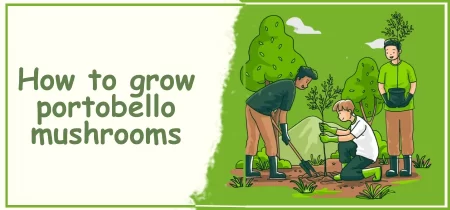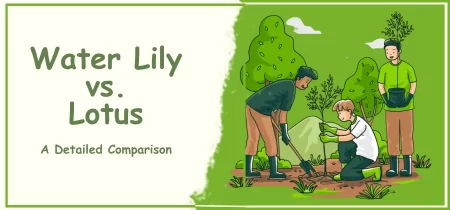Garden hoses come in a variety of shapes and sizes to fit any budget. Some garden hoses are made to grip onto plants, while others feature a tangle-free design.
Some garden hose types also have features such as a waterproof cover, a variable flow rate, and an automatic shutoff. So, which is the best choice for your garden?
Types of Garden Hoses
Garden hoses come in a variety of different types and designs.
There are many different types of garden hoses available on the market. Some hoses are designed for specific purposes, such as in the case of a hose barb, which is used to attach the hose to a pipe or faucet.
Other hoses are made for general use and can be attached to just about any type of container, including buckets, barrels, plants, or even fences. Garden hoses come in a variety of different designs and materials.
Some hoses are made from durable plastic while others are made from more delicate materials that can easily corrode. The most important thing to consider when choosing a garden hose is how it will be used.
If you plan on using the hose frequently and want it to last longer, choose a material that is resistant to corrosion.
Hose Types: Natural or synthetic?
There are many types of garden hoses available on the market today, each with its unique benefits and drawbacks.
Some hoses are made from natural materials like bamboo or reeds, while others are made from synthetic materials like plastic or cotton. Here is a look at 8 of the most popular types of garden hoses available today:
Soaker
A soaker hose is a type of garden hose that helps to cool down your plants. It is made of flexible plastic and has a nozzle on the end to allow you to direct the water flow directly to your plants.
Standard
There are many types of garden hoses, but the most common type is the standard garden hose. This type of hose is used to clean things like plants and flowers. It has a nozzle that you can use to control the water flow.
Melnor Flat: Best Soaker
There are many types of garden hoses available on the market, one of the best options is the Melnor Flat Soaker.
This handy device can help you water plants evenly and quickly without having to worry about them getting wetter or drier than they need to be. Plus, it’s easy to use – just put it in your garden hose and let it go!
Couplings
There are many types of garden hoses, but the most common type is the screwed-on hose. This type of hose is attached to a garden pot or container and used to water plants.
Screwed-on hoses come in different sizes and colors, and they can be attached to a variety of objects in your garden.
Kink-free
People often think of garden hoses as having a kink in the nozzle, but there are many types of hoses that can be used in gardens.
Some people consider these types of hoses to be more civilized than others, and for this reason, they are less commonly used in traditional gardens.
Different types of the hose can be used for different purposes, so it is important to find the right one for your needs.
There are several things you can do to make sure your garden hose is kink-free. You can make sure that the hose is properly balanced by adding weights or dollops of water to it.
You can also use a wrench or pliers to tighten or loosen the hose connections on occasion. Finally, make sure that you follow the manufacturer’s instructions carefully when using your garden hose.
Soaker Hose Net
A soaker hose is a type of garden hose that is designed to be used with water droplets. Soaker hoses are often used in gardens to keep down water usage and to provide more water space on the site. They are also used for irrigation purposes.
What Functions Do They Serve?
There are many different functions that garden hoses can serve. Some of these functions include getting water to plants, cleaning up messes, and providing irrigation for your gardens.
When shopping for a garden hose, it is important to research the individual functions that the hose will serve and which ones are the best for your needs.
Sometimes the best choice is not an all-purpose hose, but a specialized type. Garden hose brands and models range from very low-priced to more expensive, so it is important to shop around and find the best product for your needs.
Size of a Garden Hose
The Size of a Garden Hose? There are different types of garden hoses, and the size of a hose can play a big role when choosing the right one for your needs.
Here are three common sizes of garden hoses:
- The standard garden hose is 3 feet long and has a 1-foot nozzle. This is the most common type of Garden Hose and it’s great for cleaning small areas or someone’s feet.
- A large garden hose is 4 feet long and has a 2-foot nozzle. This type of hose can be used for cleaning bigger areas or for carrying water more distance.
- A short garden hose is 1 foot long and has a 0.5-foot nozzle. This is great for cleaning around the garden, or when you have a lot of small areas that need to be cleaned.
Garden hose vs. water hose – Which one is right for you?
There are many types of garden hoses, but one of the most popular varieties is the water hose. This type of hose is used for watering plants and other personal items in a home or office.
One main advantage of using a water hose over a garden hose is that it’s easier to clean.
When it comes to garden hoses, you need to make sure that the faucet on the hose can handle high levels of flow, as well as ensure that there’s enough space between the nozzle and the plant or item being watered.
Another advantage of using a water hose over a garden hose is that it doesn’t require any masonry work or dedicated plumbing skills. This makes it perfect for small apartments or condos where pendant hoses would be required.
One disadvantage of a water hose is that it s not as efficient at filtering the water. This means that it may take longer to dry off small plants and other items after watering them with a water hose than with a garden hose.
How to use a garden hose: To use a garden hose
A garden hose is a convenient tool to have in your home. It is perfect for watering plants, cleaning up spills, and more. There are many types of garden hoses available on the market, so it can be difficult to know which one is best for you.
Tips to use a Garden Hose:
Watering tools are essential in any garden, and so is using a gardener’s hose. Here are some tips to help you use your garden hose correctly:
- Make sure the nozzle is pointed down when using a garden hose. This will allow you to control how much water is forced out of the hose and keep it clean.
- Make sure the hose is properly wrapped around your hand or another gripping object to ensure an even flow of water. This will help prevent messes and materials from getting dirty.
- Keep your garden hose clear of leaves, roots, or other objects that could get caught on the nozzle or kink in the line. Doing this will help avoid any damage to your plants or equipment.
How to Choose the Right Garden Hose for Your Home
There are many types of garden hoses to choose from, but which one is right for you? Here are 8 tips to help you make the best decision:
- Consider the size of your home. A large or small home will likely have a different hosepipe size, so make sure to buy one that is specifically designed for your home.
- Consider the type of soil your plants will be grown in. Some hoses are made for quick-release water, while others take time to release the water properly (for example, a sprinkler). Make sure to choose one that will be effective on your specific type of soil.
- Consider the weather conditions. Depending on where you live, there may be periods of high and low water pressure in your area – consider buying a hose with a higher pressure rating if this is an issue for you.
- Consider the size of your hose. If you plan on using a hose to water your plants, make sure that it is large enough to reach your plant pot and the soil around it easily.
- Consider how often you will be using the hose. If you plan on watering your plants every day, a hose that is large enough to reach the soil and your plant pot will be perfect. If you plan on watering only as needed, then a smaller, shorter hose will be more practical.
- Consider how long the hose will last. This depends on how much water you plan to use and how often you will be using it.
Frequently Asked Questions
Is Flexzilla garden hose good?
There are many types of garden hoses. A few examples include: Hosea, a type made from synthetic materials, is known to be durable and easy to clean. It can also be replaced very quickly if it becomes clogged.
A typical American home has 3-5 faucets that could use a new part. The best way to find out if your faucet is affected is to go ahead and take it for a test drive by using one of the faucets in your home as an example. If the water pressure is low or there’s no water coming out, then the faucet may need to be replaced.
Fixtures like this are often called “garden hose” faucets because they come in different colors and styles to suit any area of the house.
Why do garden hoses kink?
Garden hoses can become kinked if used improperly. The most common cause of garden hose kinks is improper installation. Hose manufacturers recommend tightening the hose connections when new to prevent kinks, but many people do not do this and end up with twisted hoses.
One simple solution is to tighten the connections regularly as needed, but many people don’t do this and end up with twisted hoses that cannot be tightened easily.
Another common cause of garden hose kinks is over-tightening, which can happen if the installer forgot to tighten the connection before installation or if they didn’t use a torque wrench when installing the hose.
Over-tightening can also occur if there is a leak in the line and water seeps into the connectors. If these problems are not fixed, then over time the kinks will get worse and eventually require the replacement of the entire line.
How do I keep my garden hose untangled?
There are many ways to keep your garden hose un Twisted and tangled. One way is to make sure that you have a Serpentine-like pattern on the faucet handle. This will help prevent the hose from becoming twisted as it flows through your garden. Another way is to use a network of rubber bands or other strong material to hold the ends of the hose together while you’re trying to unknot it.
How do I stop my garden hose from bursting?
When it comes to home improvement, you never know what to expect. Maybe you need some new plumbing fittings or a new roof. But more often than not, when something needs fixing, there is an easier and cheaper solution. And that’s why stopping your garden hose from bursting is such a vital step in keeping your home clean and safe.
Conclusion
Gardening is a fun and rewarding activity that can be done by anyone. There are many types of garden hoses available, so it is important to choose the one that will fit your needs.
By following these tips, you can enjoy your garden and make it look great!




Leave a Reply